Fractal

Fractal
More Posts from Matematicaulysses and Others
😆😆😆


Mel Bochner, Untitled (“Child’s Play!”: ‘Study for 7-Part Progression’), (pen and black ink on off-white wove paper), 1966 [Art Institute Chicago, Chicago, IL. © Mel Bochner]

If one remembers this particular episode from the popular sitcom ‘Friends’ where Ross is trying to carry a sofa to his apartment, it seems that moving a sofa up the stairs is ridiculously hard.
But life shouldn’t be that hard now should it?
The mathematician Leo Moser posed in 1966 the following curious mathematical problem: what is the shape of largest area in the plane that can be moved around a right-angled corner in a two-dimensional hallway of width 1? This question became known as the moving sofa problem, and is still unsolved fifty years after it was first asked.
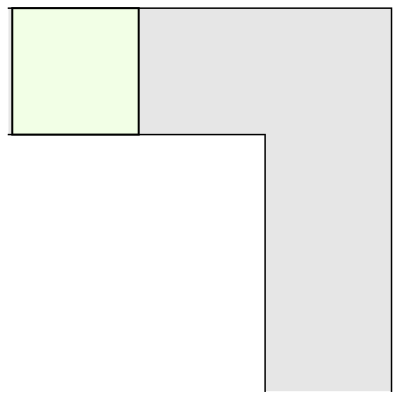
The most common shape to move around a tight right angled corner is a square.
And another common shape that would satisfy this criterion is a semi-circle.
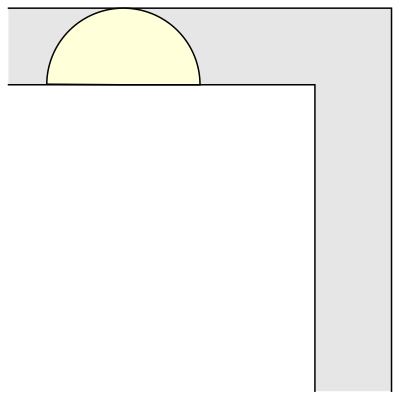
But what is the largest area that can be moved around?
Well, it has been conjectured that the shape with the largest area that one can move around a corner is known as “Gerver’s sofa”. And it looks like so:
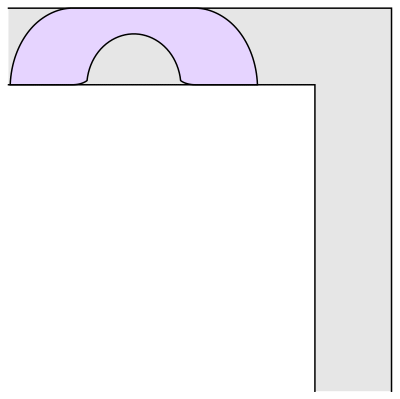
Wait.. Hang on a second
This sofa would only be effective for right handed turns. One can clearly see that if we have to turn left somewhere we would be kind of in a tough spot.
Prof.Romik from the University of California, Davis has proposed this shape popularly know as Romik’s ambidextrous sofa that solves this problem.
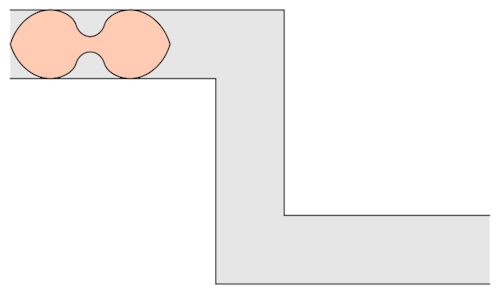
Although Prof.Romik’s sofa may/may not be the not the optimal solution, it is definitely is a breakthrough since this can pave the way for more complex ideas in mathematical analysis and more importantly sofa design.

Have a good one!
Basic definition of a tangent line.






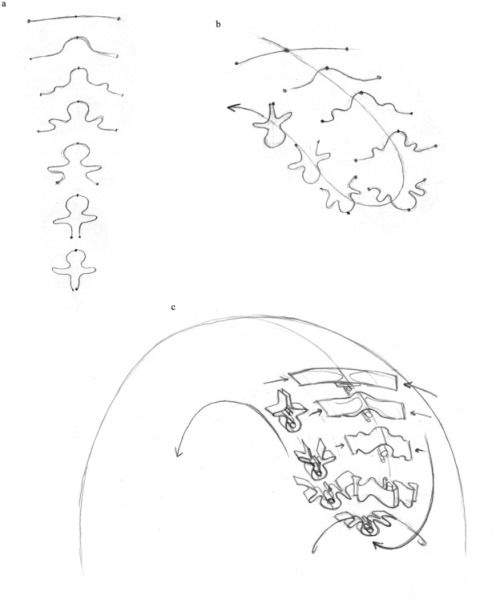





Embryo geometry: a theory of evolution from a single cell to the complex vertebrate body
24 “blueprints” that illustrate how the musculoskeletal, cardiovascular, neurological, and reproductive systems evolve through the mechanical deformation of geometric patterns. These images show how the vertebrate body might have evolved from a single cell during the evolutionary time and during individual development.
Though neither rigorous nor exhaustive in an empirical sense, our model offers an intuitive and plausible description of the emergence of form via simple geometrical and mechanical forces and constraints. The model provides a template, or roadmap, for further investigation, subject to confirmation (or refutation) by interested researchers.
The concept of “embryo geometry” suggests that the vertebrate embryo might be produced by mechanical deformation of the blastula, a ball of cells formed when a fertilized egg splits. As these cells multiply, the volume and surface area of the ball expand, changing its shape. According to the hypothesis, the blastula preserves the geometry of the initial eight cells generated by the egg’s first three divisions, which establish the three axes of the vertebrate body.
Though speculative, the model addresses the poignant absence in the literature of any plausible account of the origin of vertebrate morphology. A robust solution to the problem of morphogenesis—currently an elusive goal—will only emerge from consideration of both top-down (e.g., the mechanical constraints and geometric properties considered here) and bottom-up (e.g., molecular and mechano-chemical) influences.
Origin of the vertebrate body plan via mechanically biased conservation of regular geometrical patterns in the structure of the blastula, David B. Edelman, Mark McMenamin, Peter Sheesley, Stuart Pivar
Published: September 2016, Progress in Biophysics and Molecular Biology DOI: 10.1016/j.pbiomolbio.2016.06.007
The 120-cell.
You probably think dodecahedra are tight. Have you considered trying hyperdodecahedra?
Great thanks to Professor Mark Crawford, who showed me this gem. It may take a little bit to shatter your consciousness, so please be patient. :)
Dodecaplex. Polydodecahedron. Hecatonicosachoron. Dodecacontachoron. Hecatonicosahedroid.
Mathematics is beautiful. <3

Inscribed in a grid of 2n-by-2n cells is a circle with diameter 2n - 1. How many cells include a segment of the circle?
The count grows simply as 8n - 4. How would you show that?
Pendulum and light. Via here
Simple. Coolllllll

hm (via complex form)

-
 elijahmarkelcraneiii reblogged this · 2 years ago
elijahmarkelcraneiii reblogged this · 2 years ago -
 fuckthedramagirl5 liked this · 4 years ago
fuckthedramagirl5 liked this · 4 years ago -
 riseball33 liked this · 5 years ago
riseball33 liked this · 5 years ago -
 vex-vax liked this · 5 years ago
vex-vax liked this · 5 years ago -
 rbrooksdesign liked this · 5 years ago
rbrooksdesign liked this · 5 years ago -
 ammon-rah liked this · 5 years ago
ammon-rah liked this · 5 years ago -
 tontoniton reblogged this · 5 years ago
tontoniton reblogged this · 5 years ago -
 tontoniton liked this · 5 years ago
tontoniton liked this · 5 years ago -
 take-whats-mine-take-some-more liked this · 5 years ago
take-whats-mine-take-some-more liked this · 5 years ago -
 elly-fant liked this · 5 years ago
elly-fant liked this · 5 years ago -
 how-queerious liked this · 5 years ago
how-queerious liked this · 5 years ago -
 kirkys-pretty-pictures reblogged this · 5 years ago
kirkys-pretty-pictures reblogged this · 5 years ago -
 adriftinthereverie reblogged this · 5 years ago
adriftinthereverie reblogged this · 5 years ago -
 wrecktangled liked this · 5 years ago
wrecktangled liked this · 5 years ago -
 littleindianunicorn-blog liked this · 5 years ago
littleindianunicorn-blog liked this · 5 years ago -
 fleuritendesert reblogged this · 5 years ago
fleuritendesert reblogged this · 5 years ago -
 jaycharboo liked this · 5 years ago
jaycharboo liked this · 5 years ago -
 brownbunny75 reblogged this · 5 years ago
brownbunny75 reblogged this · 5 years ago -
 workingonalyssa-blog reblogged this · 5 years ago
workingonalyssa-blog reblogged this · 5 years ago -
 bansheefunk reblogged this · 5 years ago
bansheefunk reblogged this · 5 years ago -
 oikawasburks reblogged this · 5 years ago
oikawasburks reblogged this · 5 years ago -
 peachesannndgravy reblogged this · 5 years ago
peachesannndgravy reblogged this · 5 years ago -
 levelbrooklyn liked this · 5 years ago
levelbrooklyn liked this · 5 years ago -
 iamdangerace liked this · 5 years ago
iamdangerace liked this · 5 years ago -
 veryrunawaylady reblogged this · 5 years ago
veryrunawaylady reblogged this · 5 years ago -
 hoppehoppereiter reblogged this · 5 years ago
hoppehoppereiter reblogged this · 5 years ago -
 futurerichbiatch reblogged this · 5 years ago
futurerichbiatch reblogged this · 5 years ago -
 browngirlup liked this · 5 years ago
browngirlup liked this · 5 years ago -
 zjhj74-blog liked this · 5 years ago
zjhj74-blog liked this · 5 years ago -
 brownbunny75 liked this · 5 years ago
brownbunny75 liked this · 5 years ago -
 ric-ard liked this · 5 years ago
ric-ard liked this · 5 years ago -
 unavidamoderna liked this · 5 years ago
unavidamoderna liked this · 5 years ago -
 dr1be reblogged this · 5 years ago
dr1be reblogged this · 5 years ago -
 guy60660 liked this · 5 years ago
guy60660 liked this · 5 years ago -
 gafavintage liked this · 5 years ago
gafavintage liked this · 5 years ago -
 suddig reblogged this · 5 years ago
suddig reblogged this · 5 years ago -
 veryrunawaylady liked this · 5 years ago
veryrunawaylady liked this · 5 years ago -
 nevernotwelldressed liked this · 5 years ago
nevernotwelldressed liked this · 5 years ago -
 burn-in-hell-bitch30 reblogged this · 5 years ago
burn-in-hell-bitch30 reblogged this · 5 years ago -
 reva1041-a liked this · 5 years ago
reva1041-a liked this · 5 years ago -
 nurnielfa liked this · 5 years ago
nurnielfa liked this · 5 years ago
Blog do profº Ulysses TDBueno destinado a curiosidades, demonstrações, links, trabalhos, artigos, imagens e tudo que possa mostrar a matemática no mundo.
107 posts